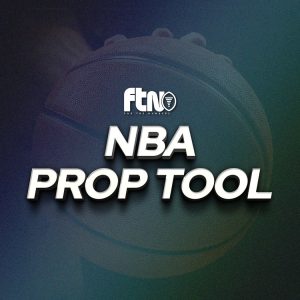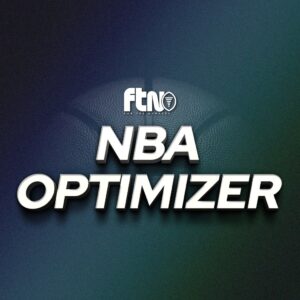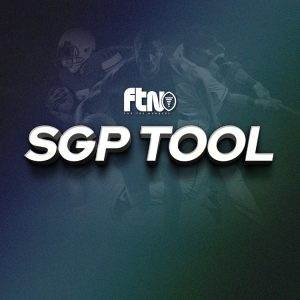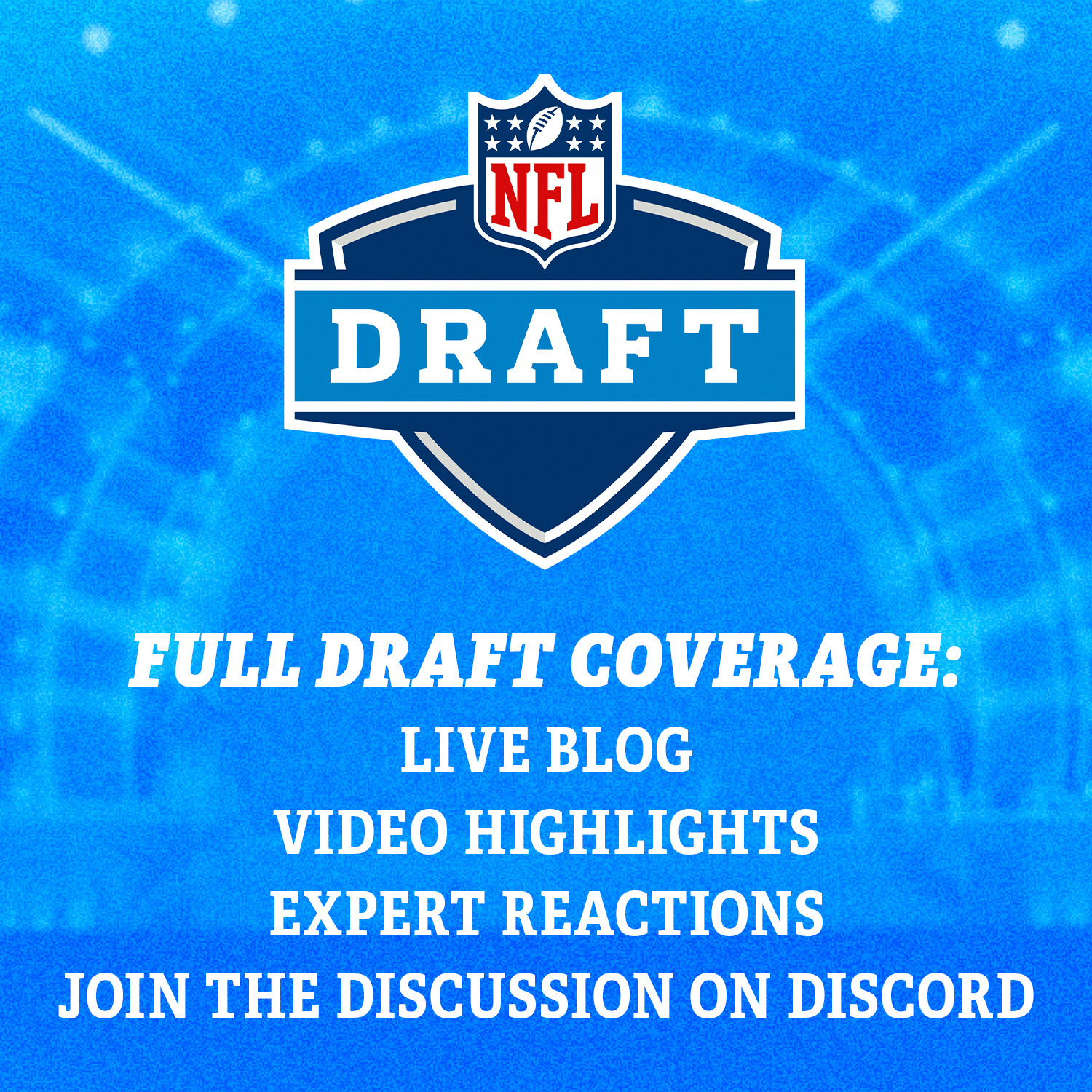
There’s been a ton of discussion in our FTN Baseball Discord lately about the use of our FAAB dollars. This is a topic I’m rather passionate about. In fact, it deals with a ton of the topics I’ve discussed in past versions of this column.
There’s nothing that grinds my gears more than Twitter analysts out there anointing players as “must-haves” or “can’t-miss” before they hit the big leagues. For many people out there, it’s a numbers game. If 10 prospects are promoted, and you hype all 10 of them up, there’s a good chance two or three might pay off. And surely, they will victory-lap those 2-3 players. But what about the other 7-8 who failed? Crickets.
We have a problem in the fantasy baseball industry. I’d argue it’s a problem across the entire fantasy industry in general. We all get seduced by the “next big thing.” It’s human nature. If you missed my article from several weeks back, I discussed how to use psychology to get a leg up on your opponents. Bidding FAAB dollars is peak psychology. I promise I won’t use the “P” word this time around. But I’d like to discuss how I approach FAAB and why I believe a more prudent approach will help you be more successful in the long term than your opponents.
We only get $1,000 in funds for the entire NFBC season. In your home leagues, it might be $100. If so, you simply need to divide every number I bring up by 10. Easy. There are 27 weeks in the NFBC regular season. If we divide $1,000 by 27, we get $37.04. That means we have the equivalent of roughly three Starbucks coffees per week to spend on free-agent acquisitions.
Jokes aside, $37 per week doesn’t seem like much at all. It becomes even more eye-opening when you go back and look at some of the bids in your leagues. In my $250 NFBC Online Auction Championship, there were some doozies across the first 7-8 weeks. I apologize in advance if you’re reading this and one of these bids was done by you. I promise, I didn’t cherry-pick or target anyone here.
- Jason Foley: $350
- Christian Scott: $335
- José Buttó: $215
- Kyle Manzardo: $198
- Miguel Amaya: $95
- Chris Martin: $88
- Michael A. Taylor: $69
- Nick Ahmed: $69
- Oswaldo Cabrera: $68
- Isiah Kiner-Falefa: $51
- Oliver Dunn: $45
First, a disclaimer. Not all of these bids are complete “doozies.” Manzardo, Scott and Foley are all, to some extent, still TBD. But with Foley’s recent struggles and usage out of the pen, I would label it “concerning.”
I didn’t mention Buttó in that pile, but he was demoted Wednesday. Enough said.
Now let’s flip things around for a second. Using the same group of players, what if you won Foley for $65, Scott for $45, Buttó for $35 or Manzardo for $25? That becomes much more palatable, even in a worst-case scenario (like burning $35 on Buttó only to drop him this Sunday). The point of this exercise is: The amount you bid on a player can drastically change the perspective of a free-agent acquisition.
It’s similar to the stock market. If you bought Apple stock at or near its inception, you’re probably reading this on a beach in the Cayman Islands. If you bought in the last five years, you’re still in the green but not actively rolling in dough. However, some of those bids above are inexcusable. If you recall that we are allotted an average of $37 per week on free agents, someone spent nearly two weeks’ worth of FAAB money on Nick Ahmed and his .236 AVG with 0 home runs. Same goes for Michael A. Taylor.
Well what about Foley? He was generally seen as a “thumbs up” acquisition early in the year. At the moment, he has 10 saves, and other than a few recent blowups, his ratios have been rather solid.
Let’s assume for the point of this exercise that Foley holds the closer role the rest of the season. Was spending up to 35% of your FAAB budget really worth it in terms of value? That’s a no from me dog. The only caveat would be if you were a team absolutely desperate for a closer. Perhaps you drafted in January and loaded up on Devin Williams and basically no one else. I could see unloading the clip on Foley in that scenario to some extent.
But remember, Foley’s main value in NFBC leagues is derived strictly from saves. Sure, he’ll strike some guys out. But not at an elite clip (currently sports an 8.31 K/9). He might luck-box his way into a few wins. All pitchers do. I’ve found that saves aren’t nearly as difficult to accrue as most managers think heading into draft season.
This tweet was from just over a week ago. In that same $250 auction league of mine, here are the prices people paid for those top-10 closers:
- Emmanuel Clase: $16 in draft
- Robert Suárez: $3 in draft
- Ryan Helsley: $12 in draft (by me)
- Clay Holmes: $14 in draft
- Kyle Finnegan: $4 in draft
- Kirby Yates: $57 in FAAB
- Mason Miller: $8 in draft
- Andrés Muñoz: $18 in draft
- Raisel Iglesias: $15 in draft (by me)
- Evan Phillips: $14 in draft
We can all agree that Clase has probably been the best and most consistent closer of the bunch. The winning bid was $16 in the draft. That’s about 16% of your draft-day budget for the top closer in fantasy. Now do you see why spending 35% of your FAAB budget on Foley seems crazy to me? I even talked about it days after it happened – this isn’t a hindsight take of mine.
So how should we approach FAAB in the future when we are dealing with the “hot new closer”? The most blunt response from me would be to avoid, avoid, avoid. Odds are, you’re going to have to pay a hefty price to acquire the player’s services. We’ve already seen that closers are a somewhat unpredictable, and sometimes fragile commodity. They basically contribute around 10% to your categories.
It’s much more cost-effective and value-driven to spend a few dollars on a setup man or strikeout artist before they win the job. Worst case, you have to cut your losses – your $1-5 losses. Best case? You end up with the next Yates and save all your FAAB dollars. I’d much rather approach it that way than spend $350 on a closer who might end up being a bust by season’s end.
That said … If you absolutely must bid on a closer you feel will be a difference-maker, I’d look at the price of the top closer in fantasy at the time and discount their perceived value by about 20-30%. In my auction league example, Clase was won with 16% of the manager’s draft-day budget. If we directly apply the draft day budget % to your seasonal FAAB%, that means I’d advocate spending no more than $112-$128 on said closer.
If you were in a snake draft, it becomes a bit more complicated to apply the above formula, but I’d limit the bid range to a similar price point. That would be a more palatable loss than a $350 bid if said closer does not meet expectations.
What about the other positions?
We just discussed closers. But there are other commodities we bid on every week, including starting pitchers and hitters across all positions. How should we approach them?
A bit differently, of course. Starting pitchers have more long-term upside than closers because in most cases, their jobs are secure as long as they perform. They also contribute to more categories since they pitch more innings than relievers. They rack up more K’s, have more of an influence on your ratios and also compete for wins. However, if we narrow the player pool to starting pitching call-ups, it becomes a much more risky commodity. Aside from the usual “he could get bumped from the rotation if he sucks” concerns that all pitchers have, they also carry the “he could get demoted for reasons X, Y and Z” concerns – and many of them might be out of the player’s control (see Max Meyer).
Enter Christian Scott. There’s almost no way I would have bid $300-plus on Scott. It’s impossible to determine whether Scott receives a “thumbs up” or “thumbs down” grade just yet. It’s too early. But in order to earn a thumbs up from me, Scott is going to have to A) Perform at a high enough level to be in your lineup each week and B) Avoid being bumped from the rotation.
Even if you feel Scott’s spot in the rotation is safe (it very well could), we’ve seen hot pitching prospects come up and struggle right away. Jack Leiter comes to mind this year. Brandon Pfaadt from last year. Even Bobby Miller, who stayed in the rotation last year after being called up, had some rough patches. Ultimately, he finished with a 3.76 ERA and 119 strikeouts in 124.1 innings and a 1.10 WHIP. The 11 wins were nice, but not every SP gets the Dodgers bump.
Miller was solid, but again, you had to pay $300-plus to acquire his services. And at the end of the season, you probably felt content, but not giddy about that purchase.
Hitting Prospects
If examining all positions, I’d be most willing to break the bank on a hitter. Remember, hitters are typically in your lineup accruing stats for 5-6 days per week. They aren’t limited by their roles like pitchers. It still carries a ton of risk, though. Tyler Black was the other week’s hot commodity off the waiver wire, and according to Todd Whitestone’s Waiver Watch, the lowest winning bid in the Main Event leagues was $38 and the high was $315.
Black was demoted the Wednesday after his FAAB run. That means even the “lucky” manager who won Black with a $38 bid spent more than a week of their average budget on a demoted player. Could it be Back in Black in Milwaukee soon? Sure.
Again, most of us are way too loose with our money when it comes to the “next big thing.” Correct me if I’m wrong, but roughly 90% of fantasy managers probably had never seen Black play a baseball game before last Sunday. It’s dangerous to spend money like that on players we know nothing about. Don’t let the Twitter guys give you FOMO (fear of missing out). There’s a decent amount that has to go right for any FAAB acquisition to pay off. They have to stay healthy. They have to actually play games. They have to play well and they have to remain with the club.
Other than Francisco Álvarez last season (who remained with the Mets the rest of the year and hit 25 HR with 63 RBIs albeit with a .209 AVG), I have never won a newly called-up prospect for more than the $50-60 range. That’s because I refuse to overpay for fragile commodities.
So why did I spend over $200 on Álvarez last season? Well, there was one major caveat. He was a catcher – one of the weakest positions in all of fantasy. Having an edge at catcher means having an edge in your league. And since I had saved most of my money to that point (unlike others), I felt comfortable unloading my money in that spot because Álvarez’ production did not need to match other position players in order to be successful.
As mentioned above, his .209 AVG wouldn’t cut it for almost any other position. The 24 HR/63 RBI is “meh” for most positions. But for a catcher? That’s an edge worth spending on. And I did. So unless there’s a big-name catcher being called up anytime soon, I’d advocate spending no more than $50-60 on prospects called up to the bigs. If Jackson Holliday can flop miserably and be sent down in a jiffy, no other prospects are 100% immune to that kind of outcome.

Before I wrap this up, I know what you’re probably thinking. If you follow the guidelines I’ve laid out above, you will almost certainly miss out on one (or several) prospects who could succeed. And that’s OK. If someone burns $150-200 on a prospect and they work out, good for them. Tip your cap. That doesn’t mean you screwed up.
If you grind through the player pool, there will always be cheap options you can scoop up and play the matchups with on a weekly basis. And with that strategy, you pretty much know the players you’re buying will be in the lineup. If it’s a SP, you’re purchasing them knowing they have a two-step or a soft matchup on tap.
There are always ways to speculate on players with cheap bids (like setup men). I’d much rather be stingy with my FAAB bucks early while others blow a hole in their wallet on the Jonatan Clase, Tyler Black and Jack Leiter flavor-of-the-week options.
That’ll do it for this week. If you have any other FAAB conundrums, Vlad talked about it at length last week in the Discord and always has you covered with his Trust the Gut series. I know he has some of the same strategies I laid out above.










































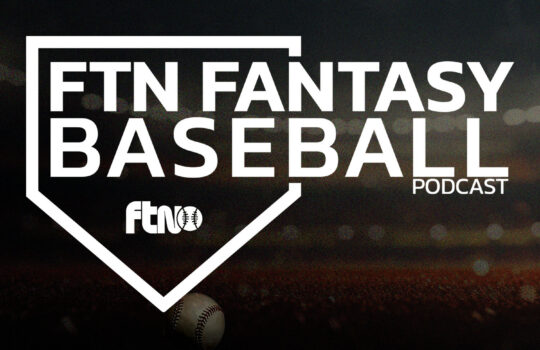

 New York Jets
New York Jets  New England Patriots
New England Patriots  Miami Dolphins
Miami Dolphins  Buffalo Bills
Buffalo Bills  Pittsburgh Steelers
Pittsburgh Steelers  Cleveland Browns
Cleveland Browns  Cincinnati Bengals
Cincinnati Bengals  Baltimore Ravens
Baltimore Ravens  Tennessee Titans
Tennessee Titans  Jacksonville Jaguars
Jacksonville Jaguars  Indianapolis Colts
Indianapolis Colts  Houston Texans
Houston Texans  Las Vegas Raiders
Las Vegas Raiders  Los Angeles Chargers
Los Angeles Chargers  Kansas City Chiefs
Kansas City Chiefs  Denver Broncos
Denver Broncos  Washington Commanders
Washington Commanders  Philadelphia Eagles
Philadelphia Eagles  New York Giants
New York Giants  Dallas Cowboys
Dallas Cowboys  Minnesota Vikings
Minnesota Vikings  Green Bay Packers
Green Bay Packers  Detroit Lions
Detroit Lions  Chicago Bears
Chicago Bears  Tampa Bay Buccaneers
Tampa Bay Buccaneers  New Orleans Saints
New Orleans Saints  Carolina Panthers
Carolina Panthers  Atlanta Falcons
Atlanta Falcons  San Francisco 49ers
San Francisco 49ers  Seattle Seahawks
Seattle Seahawks  Los Angeles Rams
Los Angeles Rams  Arizona Cardinals
Arizona Cardinals 
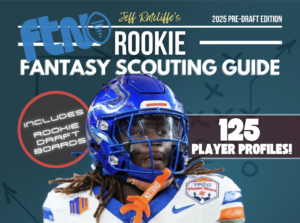

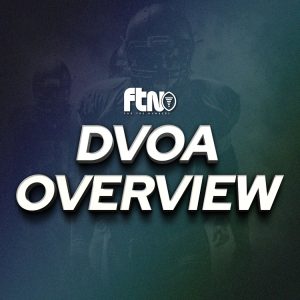
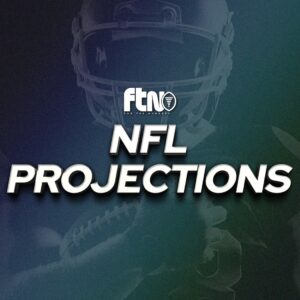




 Boston Celtics
Boston Celtics  Brooklyn Nets
Brooklyn Nets  Philadelphia 76ers
Philadelphia 76ers  New York Knicks
New York Knicks  Toronto Raptors
Toronto Raptors  Chicago Bulls
Chicago Bulls  Detroit Pistons
Detroit Pistons  Milwaukee Bucks
Milwaukee Bucks  Cleveland Cavaliers
Cleveland Cavaliers  Indiana Pacers
Indiana Pacers  Orlando Magic
Orlando Magic  Atlanta Hawks
Atlanta Hawks  Charlotte Hornets
Charlotte Hornets  Miami Heat
Miami Heat  Washington Wizards
Washington Wizards  Denver Nuggets
Denver Nuggets  Minnesota Timberwolves
Minnesota Timberwolves  Oklahoma City Thunder
Oklahoma City Thunder  Portland Trail Blazers
Portland Trail Blazers  Utah Jazz
Utah Jazz  LA Clippers
LA Clippers  Golden State Warriors
Golden State Warriors  Los Angeles Lakers
Los Angeles Lakers  Phoenix Suns
Phoenix Suns  Sacramento Kings
Sacramento Kings  Dallas Mavericks
Dallas Mavericks  Houston Rockets
Houston Rockets  Memphis Grizzlies
Memphis Grizzlies  New Orleans Pelicans
New Orleans Pelicans  San Antonio Spurs
San Antonio Spurs 



